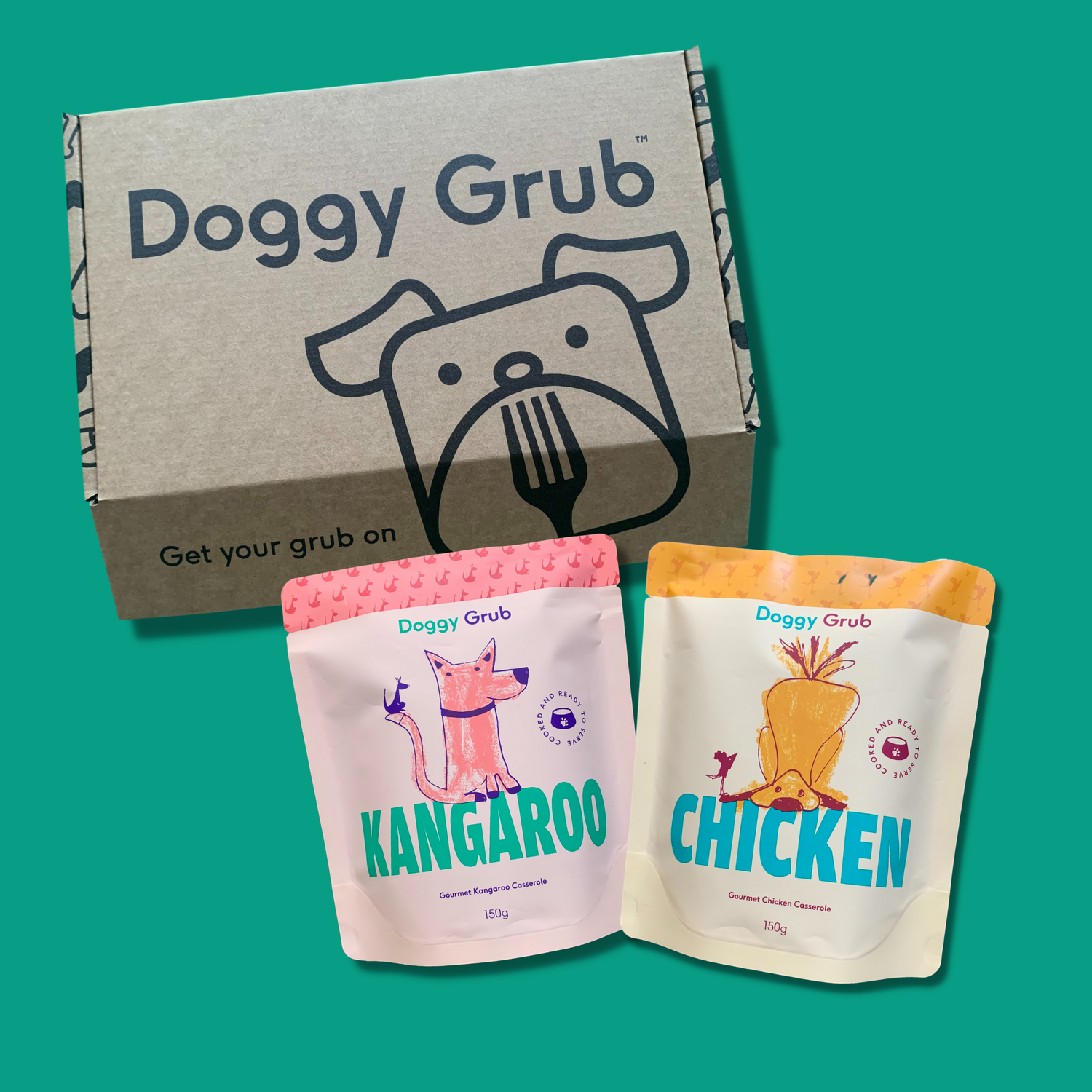In this second blog post about pet first aid, we’ll be looking at creating our own pet first aid kit, what to do if your dog gets a heatstroke, an insect bite or has swallowed something poisonous.
Being prepared is the best thing you can do in an emergency situation and can make a big difference between a good and a bad outcome.
Disclaimer: in any emergency cases, you should try and transport your pet to the vet immediately. If someone can drive for you, you can perform first aid while on the way to the vet. Make sure to call the vet beforehand so they can get everything ready for your arrival.

Heatstroke in dogs
In our Australian summer months, it’s not uncommon for temperatures to reach high mercury.
The best way to avoid heatstroke in pets is too keep them inside or make sure they have access to a shady spot and plenty of water. Do not leave your dog in a car, even for a few minutes. It is safer to leave your dog at home on hot days.
Signs of overheating are excessive panting and a reluctance to move. Further signs of heatstroke can include drooling, vomiting, collapse and loss of consciousness.
Immediate care of heatstroke in dogs
- Immediately move your dog to a cool, shady area.
- Wet your pet with water, using a hose or putting your pet in the bathtub. Insist on the back and the neck but avoid getting the head wet.
- Offer cool water to your dog but do not force your pet to drink.
- Call you vet to tell them you’re coming. You can place cold, wet towels around your dog's body, on your way to the vet.
Poisoning- My dog has eaten something toxic
We can’t always keep an eye on our pets, and they sure love to look for anything they could eat!
The signs of poisoning in dogs range from vomiting and drooling, to difficulty breathing and loss of consciousness.
If you suspect your dog has ingested something toxic, stay calm and call your vet right away.
Immediate care of poisoning in dogs
- Gather any packaging of the suspected ingested product so you can bring to the vet.
- Having activated charcoal in your pet first aid is a great idea. You can find it at health food stores. Activated charcoal acts like a magnet, absorbing the toxicant. The recommended dose of activated charcoal for all species of animals is 1-3 gm/kg body weight.
- If you do not feel comfortable administrating charcoal, remain calm and take your pet to the vet.
- Do not try and make your pet vomit.

Insect bites
Dogs are curious creatures and sometime get retribution!
The areas where an insect bite is most likely to occur are the nose, ears and paws.
Immediate care of an insect bite in dogs
- Recognise the symptoms quickly! If your dog is pawing at its face, biting its foot or is swelling in a particular area, chances are he’s victim of an insect bite.
- Try to identify the culprit (spider, bee, ants…), this will help your vet.
- If you suspect a bee sting, remove the sting by scrapping it sideways with a credit card or a dull knife. Do not use tweezers as you risk squeezing more venom in.
- Apply a paste made of water and baking soda to the bite site to soothe.
- Cover the site with a wet flannel or bag of peas wrapped in a towel to minimize swelling.
- If the swelling is severe or your dog starts having difficulty breathing, take your dog to a vet clinic!

Your pet first aid kit
So what should you have on hand to act quickly in the event of a pet emergency?
You can find ready-to-use pet first aid kit but you can also make you own with a few essential items:
- Gauze pads
- Gauze rolls
- Adhesive tape
- Blankets
- Elastic bandage
- Natural liquid soap
- Activated charcoal
- Ammonia water
- Dr Bach’s rescue remedy for pets (make a diluted version ready to use to help relieve your pet’s stress.
- Cotton balls
- Saline solution
In the next and last part to this series, we’ll be looking at what do to if your dog has a cut or laceration, is chocking and has a fracture.
If you’d like to receive the rest of this series straight to your inbox, make sure to subscribe to our newsletter.
-------------------------------------------------------------------------------------------------
The Doggy Grub blog is dedicated to helping dogs and their owners achieve happier, healthier lives, changing the way we feed our dogs one bowl at a time! If you would like to know more about our fresh food head to Doggy Grub










